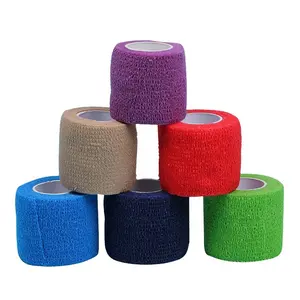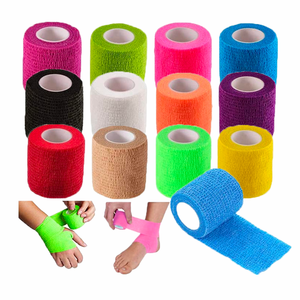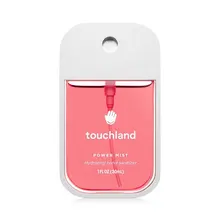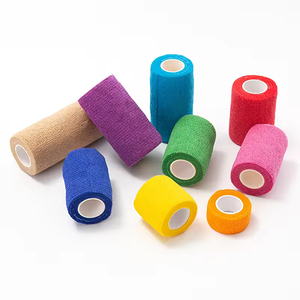Understanding Non Adhesive Bandages
Non adhesive bandages are a staple in medical supplies, catering to a variety of wound care needs. These bandages are designed to cover and protect wounds without sticking to the injury, making them an ideal choice for patients requiring frequent bandage changes or those with sensitive skin. Unlike traditional bandages, non stick bandage options do not have an adhesive backing, which means they can be removed with minimal discomfort and are less likely to cause irritation or pull on delicate skin.
Types and Materials
The materials used in non adhesive bandage products are chosen for their comfort and breathability. Common materials include spandex, a blend of spandex and cotton, and elastic fabrics that provide flexibility while allowing the skin to breathe. For those with allergies or sensitivities, latex free band aids and non latex band aids are available, ensuring safety and comfort for all users. The variety extends to specialized types such as non stick bandages for burns and non stick dressing pads, which are designed to handle specific types of wounds.
Applications and Features
Non adhesive bandage products are versatile and can be used in various medical settings, from hospitals to home care. They are particularly useful for treating open wounds, where a non stick bandage for open wound is essential to prevent the dressing from adhering to the wound bed. Additionally, non stick wound pads are commonly used post-surgery or for wounds that are still healing and producing exudate, as they can absorb fluid without sticking to the wound.
Advantages of Non Adhesive Options
The primary advantage of using a non adhesive bandage is the ease of changing dressings. For wounds that require regular inspection and care, such as burns or chronic wounds, non stick sterile bandage options make the process less painful and reduce the risk of damaging new tissue. Moreover, non stick gauze for open wounds ensures that the healing process is not interrupted by dressing changes. For added convenience, some non adhesive options come with non stick pads with adhesive tabs, allowing the pads to be secured without the adhesive coming into contact with the wound itself.
Choosing the Right Non Adhesive Bandage
Selecting the appropriate non adhesive bandage involves considering the wound type, size, and location. Products like curad non stick pads and band aid non stick pads are designed for smaller injuries and are easy to apply. For larger areas, a non stick bandage wrap may be more suitable, providing coverage and protection while maintaining the flexibility of the affected area. It is also important to consider the absorbency required; nonstick sterile pads are available in various thicknesses to accommodate different levels of wound exudate.
Conclusion
In conclusion, non adhesive bandages offer a gentle yet effective solution for wound management. Their non-stick features, coupled with a variety of materials and types, make them an essential component of wound care for healthcare providers and patients alike. When choosing a non adhesive bandage, it is crucial to consider the specific needs of the wound to ensure optimal healing and patient comfort.
































 浙公网安备 33010002000092号
浙公网安备 33010002000092号 浙B2-20120091-4
浙B2-20120091-4